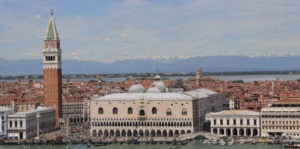In 2017 La Cite du Vin welcomed 445,000 visitors. Impressive…

|
In 2017 La Cite du Vin welcomed 445,000 visitors. Impressive…

|
Following is some great information I received from Reviews.com

Auto insurance for foreign and domestic travel
For many people, auto insurance is a monthly expense that probably doesn’t get a second thought when the fee comes out of one’s account. But for travelers, the world of auto insurance can be very complex. Safe driving is key to a great trip, whether you’re traveling within your home country or internationally.
When traveling inside the U.S.
Auto insurance is absolutely essential for a domestic road trip. If you’re due for a policy update, be sure you’re covered in these basic areas, as outlined in Reviews.com’s guide to auto insurance.
Remember that price shouldn’t be the only factor you consider when choosing your insurer. Cheaper isn’t always better, and since the average driver gets in an accident once every 18 years (maybe 3 times in their life), being fully covered will save you money in the long run. For more information on finding a great policy, you can check out their full guide here: https://www.reviews.com/auto-insurance/
Driving through to Canada and Mexico
When crossing the border between the U.S. and Canada, an existing U.S. auto policy typically will cover your international travel, according to DMV.org. Always confirm your coverage before you leave for your trip to ensure you fulfill minimum coverage requirements.
When crossing the border between the U.S. and Mexico, an existing U.S. auto policy typically does not cover you. Most drivers will need to purchase temporary Mexican auto insurance to ensure they’re covered in the event of a collision and to avoid breaking insurance laws. You can read more about temporary auto insurance in Mexico here.
Renting Internationally
Overall, it’s important to make sure that you have auto insurance that fully covers you for whatever may happen in your travels. In the event of an accident, minimum coverage may mean that you’re still paying out-of-pocket costs for medical coverage or property damage. Typical U.S. auto insurers do not cover overseas travel. The only way to know is to ask your current insurer, who may be able to help coordinate coverage for you if you aren’t currently covered.
Check with your credit card company for additional coverage, as this is a benefit for many who book their car rental through their card. This is a great perk that comes with your card, but dive in deep before you rely solely on this coverage. Sometimes these policies only cover the car you’re in, but not other drivers hurt in the accident. Be sure to contact your credit provider for a full explanation of coverage. Nerdwallet has a great list of questions to ask to make this a successful and informative conversation.
Rental car companies typically offer insurance as part of your rental package. If you feel uncomfortable with the coverage (or lack thereof) from your current auto policy or insurance from your credit card provider, this may be a great way to go. The most important part here is to do your homework before you travel, as this is a big upsell for rental companies and you may truly not need it.
What are your thoughts? Have you had experiences with insurance?
National Geographic, America’s renowned magazine, has just published its choice of the 11 best museums in the world. With more than 3.5 million copies sold monthly and 20 million visitors to its website each month, it offers travel enthusiasts a selection of the world’s finest museums. La Cité du Vin ranks alongside London’s Design Museum and Tate Modern, the Museum of Tomorrow in Rio de Janeiro and the San Francisco Museum of Modern Art.

La Cité du Vin is a unique cultural facility located in Bordeaux, dedicated to wine as a cultural, universal and living heritage. It offers a spectacular journey around the world, through the ages and in all cultures. Visitors can purchase tickets at www.laciteduvin.com and at La Cité du Vin.
Recently, I read this on a post from Getty…

Effective January 15, 2018, passengers must remove the lithium-ion batteries from their smart luggage before checking in.
The batteries that make suitcases smart are a huge fire hazard.
High-tech suitcases that charge your phone, open at a single touch, and track your valuables may make traveling less anxiety-reducing (lost luggage worries, begone!), but they unleash a whole new risk for airlines, which is why American Airlines is imposing new rules on them.
Effective January 15, American Airlines won’t let passengers check their smart suitcases if the lithium-ion battery can’t be removed, the airline announced on Friday. “We’ve looked at the prevalence of these bags as they most likely are going to be a hot item, no pun intended, this holiday season,” a spokesperson for the airline told The New York Times. “Just make sure the battery is removable,” he continued. “If it’s not removable, we won’t be permitting it to fly in the cargo hold or in the cabin.”
After American’s announcement, Delta announced similar restrictions beginning on the same date. According to CNBC, United Airlines and Southwest are working on policies as well. The Federal Aviation Administration already bans spare lithium-ion batteries in checked luggage because the powerful energy source has the potential to overheat. The batteries particularly pose a high risk when luggage is stored in an aircraft’s cargo hold. Crew members are trained to put out fires in the main cabin with extinguishers and fire containment bags, but they are essentially powerless in reaching them in the hard-to-access luggage hold. If they aren’t checking their smart bag, passengers can leave the battery in the suitcase—but it still must be removable.
The new policy is related to current ones for laptops and hoverboards, which pose similar risks when checked. Passengers will have to remove the batteries with screwdrivers approved by TSA. Some high-tech suitcase manufacturers already include batteries that can be uninstalled, including Raden and Away. Raden’s battery is stored in a removable electronics pouch while Away includes a TSA-approved screwdriver in its products. The brand Bluesmart, however, does not allow its batteries to be removed, though according to its website, the batteries are installed to comply with industry regulations.
Check out these insider travel tips from professional and frequent travelers.

If you check your bags, take a photo as they are loaded onto the belt. It never
hurts to show the airline they were, indeed, loaded.
Check reviews of airlines before you purchase that “too good to be true” ticket. What, exactly are you getting for your money?
Always fly with a reusable water bottle. Many good flasks are available. Some even come with a filter…important and necessary on some trips.
Become a regular…wherever you are. Maybe it’s stopping for a glass of wine every day at 4:00 and talking to the bartender. Maybe it’s talking to the locals at the café or bar. Think of this as your new home. See who you meet.
Jet lag? One suggestion is to get some sun the moment you land. That and a cup of coffee… What do you do?
More later…

Have you seen The Faces?
Travel Trends in 2018…Any of These Appeal to You?

Are any of these ideas or trends on your travel list for 2018?
Apparently, women traveling together is going to be a big deal in 2018. At least that’s what I’ve been informed. Do you agree? If so…why and how? Last year the solo travel industry blossomed. Did you take a solo trip?
Cooking classes have always been popular. In 2018, they are becoming the thing to do. You learn to cook…then you eat. Sounds good to me.
Likewise, safaris have been a popular trip. Some areas in Africa are experiencing major water shortages and are cutting back on these trips. That leaves other areas picking up the slack. Some places could be more dangerous. Be sure to check before you go. Safety should be a concern wherever you go.
Fitness trips are quickly expanding and offering more options. No longer are just trekking trips offered. You now can cycle in the Alps, run marathons across the world, kayak the oceans, sail your own adventure, and more. Interested?
What are your travel trends for 2018?
Getting ready for Spring!

From the Chicago Tribune
The State Department on Wednesday introduced shades of gray into its system that tells people about trouble spots around the globe.
The standard jargon at the State Department’s website (travel.state.gov) used to be a “warning” — something serious that would suggest extra caution (and sometimes more) — or an “alert,” which often was a red flag, sometimes temporary, telling travelers about, say, an election or the aftermath of a natural disaster.

The revised system assigns levels of advice (1 to 4) about travel as it pertains to every country.
None of levels prohibits travel. North Korea is the only country that’s off-limits to Americans without special permission.
Five states in Mexico have gotten the sternest “do not travel” advisories under the revamped system.
The five include the northern border state of Tamaulipas and the Pacific coast states of Sinaloa, Colima, Michoacan and Guerrero.
The State Department had previously discouraged travel to all or part of the five states’ territories but the new warnings are sterner, placing the drug- and crime-plagued states on the same level warning level as Somalia, Yemen, Syria or Afghanistan.
Mexico as a whole has a level-two rating, “exercise increased caution” in the new four-level alert system, because of concerns about crime. But an additional 11 Mexican states got a level-three warning, “reconsider travel.” Mexico has 31 states, half of which are under level 3 or 4 warnings.
The State Department also appears to have softened its stance on Cuba, advising people to “reconsider” travel to the Caribbean island nation under the new system.
Last September, it issued a warning that told Americans to avoid travel to Cuba in the wake of health problems reported by Havana-based U.S. diplomats and their family members. The U.S. government evacuated most employees at its embassy in the Cuban capital.
The department issued this fact sheet about the changes on Wednesday:
On January 10, 2018, the Department of State launched improvements to how we share information with U.S. travelers. These improvements will provide U.S. citizens with clear, timely, and reliable safety and security information worldwide. Under the new system, every country will have a Travel Advisory, providing levels of advice ranging from 1 to 4:
The Travel Advisories for each country replace previous Travel Warnings and Travel Alerts. While we will issue an overall Travel Advisory level for every country, levels of advice may vary for specific locations or areas within a country. For instance, we may advise U.S. citizens to “Exercise Increased Caution” (Level 2) in a country, but to “Reconsider Travel” (Level 3) to a particular area within the country.
Our detailed Travel Advisories will also will provide clear reasons for the level assigned, using established risk indicators, and offer specific advice to U.S. citizens who choose to travel there:
We will review and update each Travel Advisory as needed, based on changes to security and safety information. Additionally, U.S. embassies and consulates will now issue Alerts to replace the current Emergency Messages and Security Messages. Alerts will inform U.S. citizens of specific safety and security concerns in a country, such as demonstrations, crime trends, and weather events.
The Department’s newly-redesigned hub for traveler information, travel.state.gov, will host all Travel Advisories, recent Alerts issued for each country, and an interactive map in mobile-friendly formats. Country pages on the site will continue to include all travel information currently available, including details about entry/exit requirements, local laws and customs, health conditions, transportation, and other relevant topics.
To receive security and other important updates while traveling, U.S. citizens can enroll their travel plans in the Smart Traveler Enrollment Program (step.state.gov), and follow us on Twitter (@travelgov) and Facebook (facebook.com/travelgov).
This article was originally published in the Chicago Tribune. In our crazy world, there are many warnings about travel. If you’re going to travel, it’s best to be informed about your destination. This is not cause for alarm…just information.
As always…travel safe and pay attention. It really doesn’t matter if you traveling to a far away destination or a local one.
The Department of State has launched new Travel Advisories and Alerts to make it easier for U.S. citizens to access clear, timely, and reliable safety and security information about every country in the world. For more details and FAQs about our Travel Advisories and Alerts, please see travel.state.gov/travelsafely. You are receiving this because you are enrolled in our Smart Traveler Enrollment Program (STEP). You do not need to take further action to continue receiving these updates. Before any travel abroad, we encourage you to check our safety and security information for your destination at travel.state.gov/destination.

France, Level 2: Exercise increased caution
Exercise increased caution in France due to terrorism.
Terrorist groups continue plotting possible attacks in France. Terrorists may attack with little or no warning, targeting tourist locations, transportation hubs, markets/shopping malls, local government facilities, hotels, clubs, restaurants, places of worship, parks, major sporting and cultural events, educational institutions, airports, and other public areas.
Read the Safety and Security section on the country information page.
If you decide to travel to France:
Bottom line…pay attention to warnings and pay attention when you travel, regardless of where you’re going.